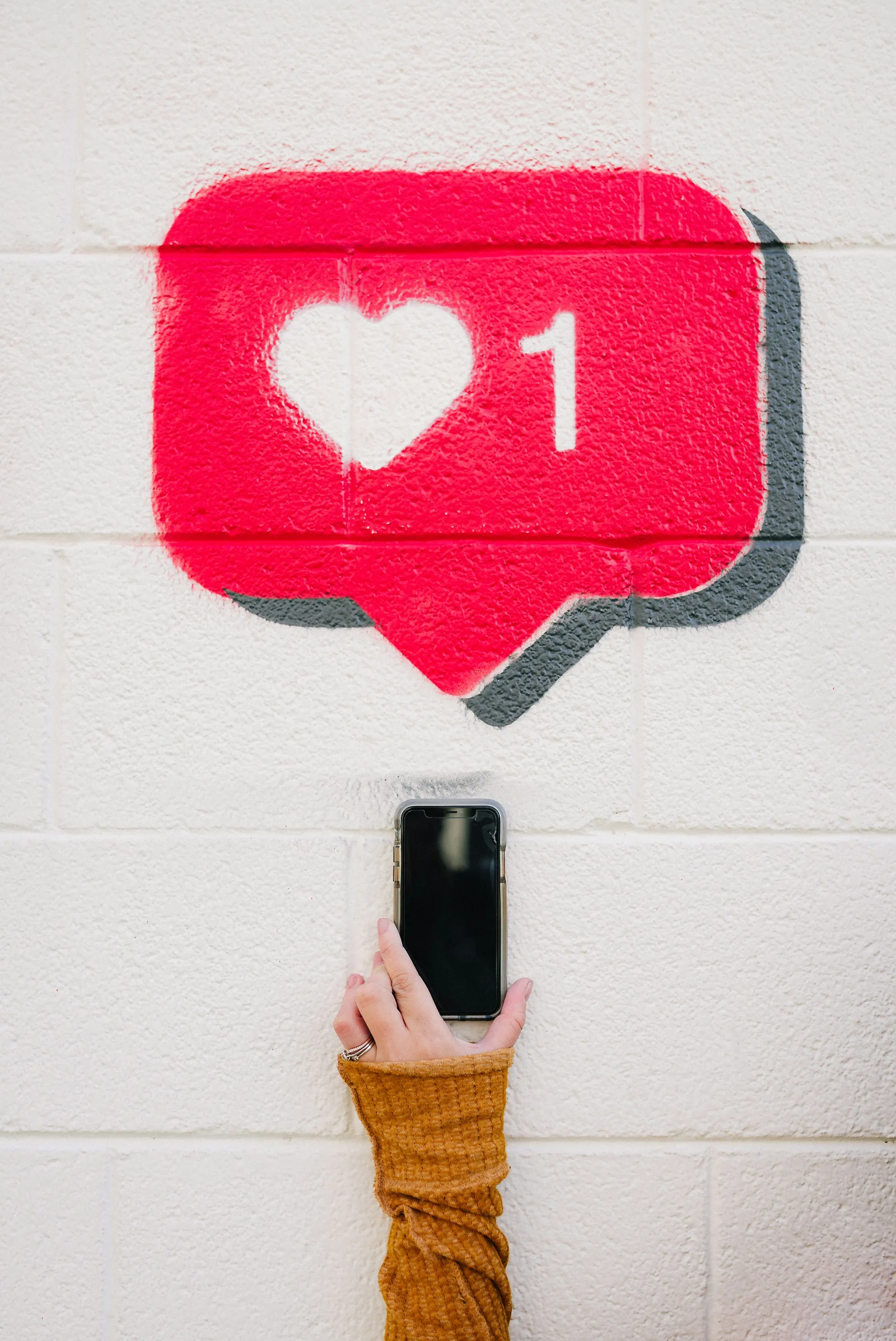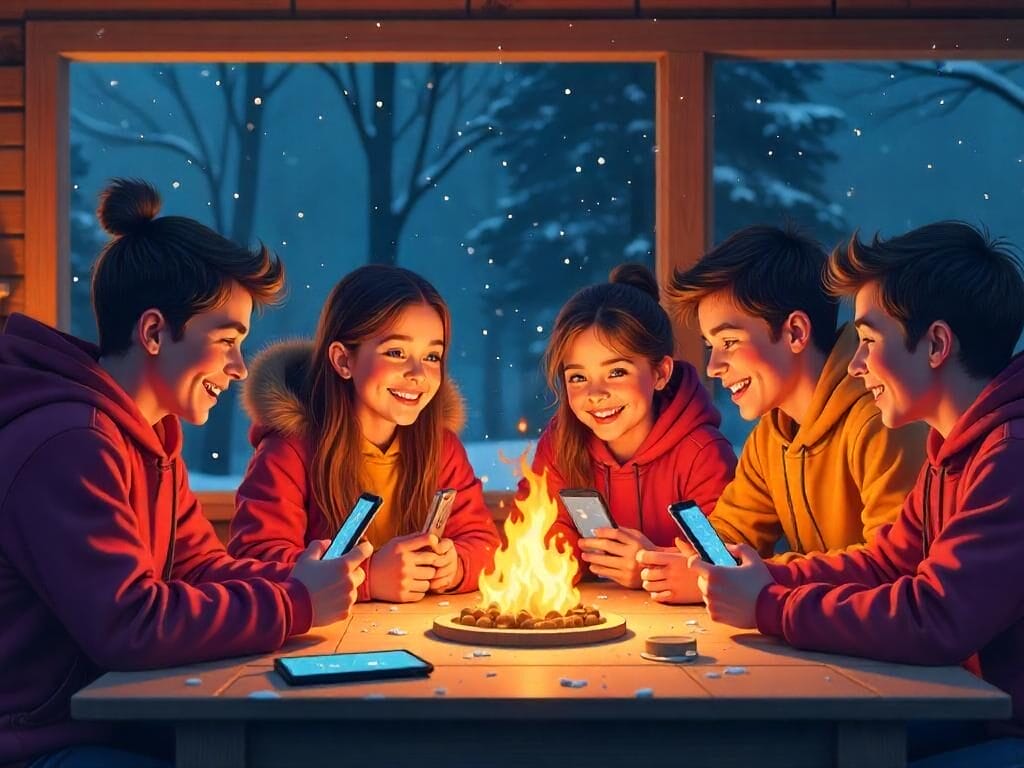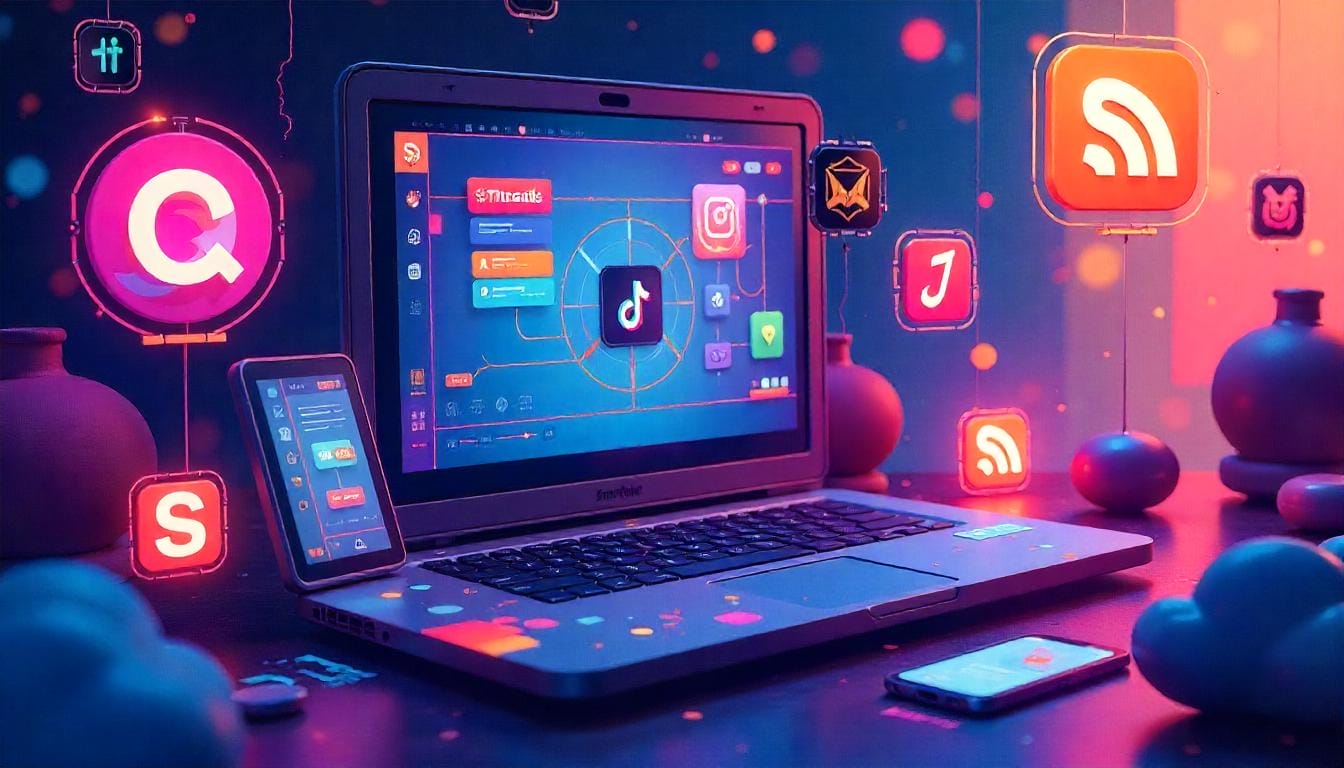In the ever-evolving landscape of digital marketing, social media has emerged as a powerhouse for branding. If you’re wondering about creative ways to use social media to elevate your brand, you’re in the right place.
Social media platforms are no longer just avenues for sharing updates; they are dynamic tools that can help you engage your audience, build a strong brand identity, and drive business growth. From crafting compelling content and leveraging influencer partnerships to utilizing user-generated content and optimizing your posts with keywords, the possibilities are endless. In this article, we’ll delve into some of the most innovative and effective strategies to use social media for branding, helping you create a buzz around your game launch. lasting impression and connect deeply with your target audience.
Social Future: Emerging Platforms and Trends

Exploring New Platforms
The social media landscape is continually evolving, with new platforms emerging to cater to diverse user needs and preferences. In 2025, several innovative social media networks are gaining traction. For instance, platforms like Partiful, a social party planning app, and Quest, a digital learning platform focused on employability skills, are reshaping how people connect and learn online.
Another notable platform is Threads, launched by Meta as a text-based alternative to Instagram and a competitor to Twitter (now X). Threads has quickly gained a significant user base, with over 200 million users, and is particularly popular for its shareable, update-based layout.
Lemon8, a photo-sharing app from ByteDance, the parent company of TikTok, is also making waves. It combines the charm of old-school Instagram and Pinterest, focusing on Images and videos, particularly gameplay videos, are essential in captivating the gaming community., and has seen a surge in popularity in the US market. These new platforms offer fresh opportunities for brands to engage with their audiences in unique and creative ways, from event planning to educational content and visual storytelling.

Adopting AR and VR
Augmented Reality (AR) and Virtual Reality (VR) are becoming increasingly integral to the social media experience. These technologies are transforming how users interact with content, making it more immersive and engaging.
Brands are starting to leverage AR and VR to create innovative experiences, such as virtual try-ons, interactive product demos, and immersive storytelling. For example, Instagram and TikTok have already introduced AR filters that allow users to enhance their videos and photos with interactive elements. As these technologies advance, we can expect to see more sophisticated applications that blur the lines between the physical and digital worlds, offering brands new avenues to captivate their audiences.
The adoption of AR and VR is not just about entertainment; it also opens up new possibilities for customer engagement, product marketing, and even social interactions. As these technologies become more mainstream, brands will need to adapt their strategies to incorporate these innovative tools.
Using AI for Personalization
Artificial Intelligence (AI) is revolutionizing social media marketing by enabling personalized content at scale. Generative AI, in particular, is becoming a standard practice in social media content creation.
Brands are using AI to generate captions, translate scripts, create images, and even draft influencer proposals. This not only streamlines the content creation process but also allows for a level of personalization that was previously unattainable. AI-driven social listening is another trend on the rise.
By analyzing user interactions and trends in real-time, brands can refine their content strategies to better resonate with their target audience. This micro-virality trend involves identifying and capitalizing on small, niche trends that can quickly gain traction, allowing brands to stay agile and relevant in a fast-paced social media environment.
As AI continues to evolve, we can expect to see even more sophisticated personalization techniques, enabling brands to tailor their content to individual user preferences and behaviors, thereby enhancing engagement and driving better business outcomes.
Using it Right: Creative Campaigns and Content

Storytelling with a Twist
Effective social media storytelling is not just about sharing a narrative; it’s about doing it in a way that resonates deeply with your audience. One of the most powerful techniques is to align your brand with a higher purpose or value. This approach, known as “storytelling with purpose,” can inspire and connect with your audience on an emotional level.
For instance, Patagonia, an outdoor clothing company, advocates for environmental sustainability and social responsibility through their stories. They highlight their commitment to these causes, connecting with customers who share similar values. This not only builds a strong brand identity but also fosters a loyal community of customers who are invested in the brand’s mission.
Another twist is using the “before-and-after” method, where you describe a problem, outline the ideal solution, and then explain how your brand provides that solution. This structure can be applied to various types of posts, such as links to articles, tips, and email campaigns. It makes the story more relatable and engaging by showing the transformation or benefit that your brand offers.

User-Generated Content and Collaboration
User-Generated Content (UGC) is a goldmine for creative social media campaigns. By encouraging your audience to create and share content related to your brand, you foster authenticity and build a sense of community.
Sharing user-generated stories, reviews, and testimonials can significantly impact the perception of your brand and increase trust among potential customers. For example, Airbnb uses UGC by adding stories to customers’ photos and posting them on Facebook. This makes the experience more real and encourages more people to use their services.
Similarly, brands can collaborate with their audience by asking for feedback and incorporating it into their storytelling. This co-creation process ensures that the brand story resonates with the audience and feels more personal and relevant.
Interactive and Gamified Content
Interactive and gamified content is another creative way to engage your audience and make your social media posts stand out. Tools like quizzes, polls, interactive videos, and contests can increase engagement and create a sense of involvement. BuzzFeed, for instance, often creates interactive quizzes and polls that encourage audience participation and social sharing.
These interactive elements drive substantial traffic to their website and keep users engaged. Similarly, brands can use Instagram Stories and Facebook polls to get active responses from their audience, making the content more dynamic and engaging.
Visual content, such as infographics, videos, and images, also plays an essential role in interactive storytelling. Short-form videos, especially on platforms like Instagram and TikTok, can quickly capture attention and encourage sharing. Oreo, for example, has been successful in creating short and engaging videos that generate high levels of user engagement.
By incorporating these interactive and gamified elements, brands can create a more immersive and engaging social media experience that keeps their audience coming back for more.
Talk to Pros: Leveraging Influencer Partnerships

Selecting the Right Influencers
When it comes to leveraging influencer partnerships, selecting the right influencers is key for the success of your campaign. It’s not just about the number of followers an influencer has, but also about their Relevance in social media for gamers is key to ensuring your content resonates with the community., reach, and resonance with your target audience. To start, you need to identify influencers who already post about topics related to your service or product.
This ensures that their content aligns with your brand voice and resonates with your target audience. For instance, if you’re a beauty brand, you would look for influencers who regularly post about beauty and skincare. Authenticity is also key.
Look for influencers with genuine engagement and a strong connection with their followers. A poor engagement ratio to follower count or spam-like comments can indicate fake accounts or fake followers, which can harm your brand’s credibility. Checking their past collaborations and press kits can provide valuable insights into their work quality and reliability.
Additionally, consider the type of influencer you need. Nano and micro-influencers, despite having smaller follower counts, often deliver impactful gameplay videos that resonate with their audience. higher engagement rates and more targeted reach within specific niches.
This can be particularly beneficial for brands looking to build tight-knit communities around their products.
Crafting Collaborative Content
Crafting collaborative content with influencers involves more than just sending them a product or a script. It’s about building a partnership that feels organic and authentic to both the influencer’s audience and your brand.
When collaborating with influencers, it’s important to give them creative freedom while ensuring their content aligns with your brand values and messaging. Influencer content is typically more conversational and personal, which helps differentiate it from brand-driven or sales-oriented posts, especially in the realm of social media for gamers.
However, it’s important to refine your campaign messaging to ensure it resonates with the influencer’s audience and your brand goals. For example, instead of asking an influencer to post a straightforward product review, you could ask them to share how they incorporate your product into their daily routine. This approach makes the content more relatable and engaging, as it shows real-life usage and benefits.
Long-term Relationships vs. Short Campaigns
Building long-term relationships with influencers can be far more beneficial than running short, one-off campaigns. Long-term partnerships allow for deeper brand integration and more consistent messaging, which can lead to higher ROI and stronger brand loyalty. Brand ambassador programs, for instance, have been shown to deliver the kind of engagement that is crucial for gamedev marketing. highest ROI for brands.
These programs involve partnering with influencers over an extended period, allowing them to become true advocates for your brand. This approach fosters trust and authenticity, as the influencer has the time to genuinely experience and endorse your products.
In contrast, short campaigns can feel more like fleeting promotions and may not leave a lasting impression on the audience. By investing in long-term relationships, you can create a stable and reliable network of influencers who can consistently promote your brand and help you achieve your marketing goals.
Social Media Strategies for Game Development
In the competitive world of game development, social media has become an invaluable tool for marketing, community building, and player engagement. Game developers and studios can leverage social media platforms to create buzz, showcase game development progress, and build a dedicated fan base.
Showcasing Game Development Journey
Game developers can use platforms like Twitter, Instagram, and TikTok to provide behind-the-scenes glimpses into the game development process. This transparency not only generates excitement but also helps potential players connect with the game and its creators. Sharing development milestones, concept art, character design iterations, and technical challenges can create a compelling narrative that keeps the audience invested.
For example, indie game developers often use Instagram Reels and TikTok to share short clips of game mechanics, character animations, and level design. These platforms are particularly effective for visually showcasing the game’s unique aesthetic and gameplay elements.
Community Engagement and Feedback
Social media provides game developers with a direct channel to engage with their player community. Platforms like Discord, Reddit, and Twitter allow developers to:
- Gather player feedback during different stages of game development
- Conduct polls for potential features or design choices
- Host live Q&A sessions with developers
- Share updates about game patches, expansions, and upcoming content
Interactive content such as game development livestreams on Twitch or YouTube can help build anticipation and create a sense of community. Developers can showcase coding processes, design workshops, and even involve the community in decision-making, making players feel like they’re part of the game’s creation.
Influencer Partnerships in Gaming
The gaming industry has a unique opportunity to leverage influencer marketing. Streamers, eSports professionals, and gaming content creators can provide extensive exposure for new games. By collaborating with influencers who align with the game’s genre and style, developers can:
- Reach targeted audiences
- Generate authentic gameplay content
- Provide first impressions and reviews
- Create excitement through gameplay previews
Leveraging AR and VR in Game Marketing
With the rise of Augmented Reality (AR) and Virtual Reality (VR), game developers can use these technologies in their social media marketing strategies. Platforms like Instagram and TikTok offer AR filters that can be customized to reflect game characters or themes, creating interactive marketing experiences.
User-Generated Content and Challenges
Encouraging user-generated content can significantly boost a game’s visibility. Game developers can:
- Create hashtag challenges related to the game
- Host fan art competitions
- Encourage players to share their gameplay highlights
- Feature community-created content on official channels
Platforms Tailored for Game Marketing
Different social media platforms offer unique advantages for game marketing:
- TikTok: Short, engaging gameplay clips and meme-style content
- Twitter: Quick updates, patch notes, and community interactions
- Instagram: Visual content, concept art, and character designs
- YouTube: Detailed gameplay trailers, developer diaries, and long-form content
- Twitch: Live gameplay streams and community events
- Discord: Direct community engagement and communication
Measuring Success in Game Social Media Marketing
Game developers should track metrics such as:
- Wishlist additions on platforms like Steam
- Follower growth and engagement rates
- Community sentiment
- Conversion rates from social media to game downloads or purchases
- Player retention and community activity
Conclusion
Social media has transformed game marketing from traditional advertising to interactive, community-driven experiences. By authentically sharing the game development journey, engaging with players, and creating compelling content, developers can build anticipation, loyalty, and a thriving community around their games.In the ever-evolving landscape of social media, staying ahead of the curve is essential for effective branding. Remember, 2025 is all about content experimentation, where brands are pushing creative boundaries and moving away from traditional consistency to entertain and engage their audiences. Leverage emerging trends such as short-form videos, which dominate user engagement, and micro-influencers who bring authenticity and higher engagement rates.
Incorporate generative AI to streamline content creation and enhance personalization, making your brand more agile and responsive to user needs. Build meaningful relationships with influencers and focus on long-term partnerships to foster trust and loyalty.
Engage in interactive and gamified content, and optimize your posts for social search to maximize visibility. Finally, use data-driven strategies to measure success and adapt your approach based on performance metrics.
By embracing these trends and strategies, you can ensure your brand remains relevant, engaging, and successful in the dynamic world of social media. Take action now to transform your social media strategy and drive lasting impact can be achieved through consistent engagement and exciting gameplay videos. for your brand.
FAQ
How can I determine the most relevant social media platforms for my brand’s target audience?
To identify the most relevant social media platforms for your brand’s target audience, start by analyzing their demographics, interests, and behaviors. Leverage social media analytics and industry research to pinpoint where your audience is most active and engaged.
Take into account factors such as age, gender, location, and interests to align your audience with the right platforms. For instance, Instagram is ideal for visual-driven businesses, LinkedIn suits professionals, and TikTok resonates with Gen Z audiences.
What types of content perform best on different social media platforms, and how can I tailor my content to each platform?
Instagram: a platform where you can promote your game effectively using targeted hashtags. Visual content such as photos, videos, Stories, Reels, and live videos perform exceptionally well. Focus on high-quality visuals, user-generated content, and engaging narratives. Industries like travel, beauty, fashion, and health & fitness flourish here.
TikTok: Short-form videos, often featuring music, sound effects, and filters, are highly effective. Content should be captivating from the start, with trends, challenges, and DIY tricks being particularly popular. The primary audience includes Gen Z and younger demographics.
YouTube: Both long-form videos and YouTube Shorts are successful. Content can range from tutorials, gaming streams, educational materials, and DIY hacks. To maximize retention, blend in-depth insights with quick, entertaining videos.
Snapchat: Ephemeral content like photos and short videos work best. Prioritize real-time, behind-the-scenes content, user-generated material, and exclusive offers. This platform is ideal for engaging with a younger demographic.
Threads: Casual discussions and text-based content are preferred. Brands should participate in trending topics and maintain a distinct brand voice within this text-focused social experience.
How can I use social media metrics such as impressions, engagement, and mentions to measure the effectiveness of my branding efforts?
To evaluate the effectiveness of your branding efforts, track impressions to measure content visibility, engagement (likes, comments, shares) to gauge audience interaction, and mentions to monitor brand-related discussions. Analyze these metrics over time to assess growth in reach, engagement rates, and overall brand awareness.
Additionally, examine sentiment analysis and response rates to better understand public perception and the efficiency of your customer service.
What strategies can I employ to maintain consistency in my brand’s visual identity and messaging across various social media platforms?
To ensure consistency in your brand’s visual identity and messaging, define a clear brand identity and create a comprehensive brand style guide. This guide should outline your tone of voice, visual elements, and messaging guidelines.
Use consistent language and tone across all platforms, and maintain visual uniformity with the same logo, color palette, and fonts. Develop a visuals library for easy access to approved assets and utilize social media templates to preserve branding.
Establish a regular posting schedule and adapt content to suit the nuances of each platform. Continuously monitor performance and refine your strategy based on analytics and audience feedback.
What are some effective social media strategies for indie game devs?
Effective strategies for indie game devs include creating engaging content that showcases your game, using hashtags to increase visibility, posting regular game updates, and interacting with your audience on platforms like Twitter and Reddit.
How can I use hashtags to promote my indie game?
You can use hashtags to promote your indie game by researching popular tags related to indie games and incorporating them into your posts. This helps in reaching a broader audience and enhances discoverability on social media platforms.
What type of content should indie game developers create for social media?
Indie game developers should create a variety of content including game trailers, behind-the-scenes videos, concept art, and developer diaries. This kind of content keeps followers engaged and excited about the game’s development.
How important is a game trailer for indie game promotion on social media?
A game trailer is crucial for indie game promotion on social media as it visually showcases gameplay and storytelling, helping to capture the interest of gamers and potential players. It can significantly enhance your marketing efforts.
What are the best practices for posting about my indie game on social media?
Best practices include creating a consistent posting schedule, engaging with your audience, using high-quality visuals, and incorporating relevant hashtags. This will help maintain interest and foster a community around your game.
How can social media help indie developers get feedback on their games?
A: Social media provides a direct channel for indie developers to gather feedback from gamers. By sharing gameplay clips or demos and encouraging comments, developers can gain valuable insights to improve their games.
What social media platforms should indie game developers focus on?
Indie game developers should focus on major social media channels like Twitter, Facebook, Instagram, and TikTok. Each platform has unique advantages for reaching different audiences and sharing various types of content.
How can I engage my audience while showcasing my indie game on social media?
To engage your audience, consider running giveaways, hosting Q&A sessions, and creating interactive content such as polls. This helps build a community of gamers who are invested in your indie game.
What role does a social media manager play in promoting an indie game?
A social media manager can help indie developers by strategizing and executing social media marketing efforts, creating content, managing social media accounts, and analyzing engagement metrics to improve outreach.
How often should I post updates about my indie game on social media?
It’s recommended to post updates about your indie game regularly, ideally several times a week. Consistency helps keep your audience engaged and informed about the latest developments in your game design.
A game developer that wants to share its knowledge and experience with other game developers-





